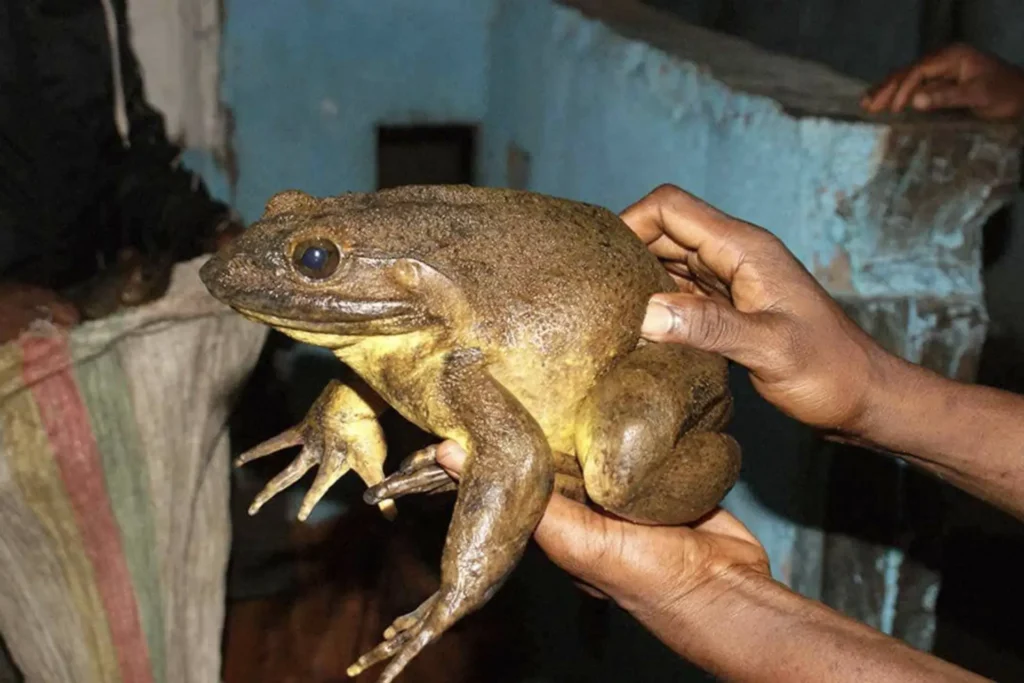I remember the first time I heard about the Bufo alvarius toad in a casual conversation with a friend who had just returned from a spiritual retreat. He spoke of a mystical experience, one that was beyond words, involving the secretion of a toad native to the Sonoran Desert.
At first, I couldn’t quite wrap my head around it. A toad and a psychedelic experience—how did those two concepts intersect?
The more I dug into the topic, the more I realized this wasn’t just a niche curiosity but a growing conversation in the world of alternative healing and spirituality. But one question stuck with me: which gender of the Bufo alvarius toad actually carries DMT?
Understanding the Bufo Alvarius Toad
Also known as the Colorado River toad or Incilius alvarius, the Bufo alvarius toad is a species that lives primarily in the deserts of the southwestern United States and northern Mexico.
It is one of the largest toads in North America, recognized for its smooth, olive-green skin and distinctive cranial crests.
This toad gained fame in the psychedelic community because of the potent secretion from its glands, which contains 5-MeO-DMT—a powerful psychoactive compound.
Despite its increasing popularity, especially in Bufo ceremonies where participants inhale this secretion, there’s still a lot of mystery surrounding these creatures, particularly in understanding the role of gender in venom secretion.
What is DMT and How Does It Relate to the Bufo Toad?
DMT (Dimethyltryptamine) is a naturally occurring compound found in various plants and animals, including humans.
The form that Bufo alvarius secretes is 5-MeO-DMT, a substance even more potent than the DMT found in ayahuasca or other entheogenic substances.
When the toad feels threatened, it excretes venom from its parotoid glands behind its eyes, which contains this powerful psychoactive substance.
But here’s the big question: Does one gender of the Bufo alvarius toad produce more DMT than the other?
Which Gender of the Bufo Alvarius Toad Carries DMT?
Through research and analysis, it turns out that both male and female Bufo alvarius toads carry DMT in their venom, though the exact quantity and composition can vary.
Interestingly, there’s no substantial scientific evidence pointing to a stark difference between males and females in terms of DMT production. Both genders possess parotoid glands that excrete the venom containing 5-MeO-DMT.
However, there are a few factors worth noting that could influence venom production. Hormonal changes, particularly during breeding season, might affect the amount of venom a toad produces.
Some anecdotal reports suggest that male toads may be more easily found in the wild during breeding season, but this doesn’t translate to a significant difference in DMT levels between the sexes.
Experts like Dr. Gerry Sandoval, who has studied the Bufo alvarius toad extensively, have confirmed that both genders carry the psychoactive substance.
The key difference in venom composition is more closely related to environmental factors, such as diet and the toad’s habitat, rather than gender.
Collecting Bufo Alvarius Toad Venom
The process of collecting venom from the Bufo toad for psychedelic use is a controversial topic. The venom is “milked” by gently squeezing the parotoid glands, which causes the toad to release its secretion. This is then dried and later vaporized for use in ceremonies.
However, it’s important to mention the ethical concerns surrounding this practice. Overharvesting and the illegal sale of Bufo toads have raised serious environmental concerns.
Conservationists warn against disrupting the natural habitats of these toads, especially as their numbers dwindle in certain regions. In addition, improper handling can cause harm to the toad, and extracting venom in an inhumane way could lead to distress or death for these creatures.
The Safety of Bufo Alvarius Toad Venom
While the use of Bufo toad venom in psychedelic ceremonies has become more widespread, it is not without risks. The experience is often described as intense and can be overwhelming for some users.
Care must be taken to ensure that ceremonies are conducted safely and ethically, ideally under the guidance of experienced practitioners.
Moreover, Bufo alvarius toads are indeed poisonous if ingested in their natural form. The toxins in their venom can cause serious harm if they enter the bloodstream, so it’s essential to understand that while the 5-MeO-DMT component can be vaporized for psychedelic use, the venom itself should never be ingested directly.
FAQs:
1. What is the Bufo Alvarius toad?
The Bufo Alvarius toad, also known as the Colorado River toad, is a species found in the Sonoran Desert. It is known for secreting venom that contains 5-MeO-DMT, a powerful psychoactive compound.
2. Which gender of the Bufo Alvarius toad produces DMT?
Both male and female Bufo Alvarius toads produce venom that contains 5-MeO-DMT. There is no significant difference in DMT production between the genders.
3. Is Bufo Alvarius venom poisonous?
Yes, the venom of the Bufo Alvarius toad is poisonous if ingested. However, when properly vaporized, the 5-MeO-DMT component of the venom can be used in psychedelic ceremonies.
4. How is Bufo Alvarius venom collected?
Venom is collected by gently “milking” the parotoid glands behind the toad’s eyes. This secretion is then dried and used for vaporization in controlled, ceremonial contexts.
5. What are the ethical concerns with using Bufo Alvarius venom?
Overharvesting, habitat disruption, and inhumane venom collection practices are major ethical concerns. Conservationists advocate for the protection of these toads and responsible, sustainable practices.
Conclusion:
Both male and female Bufo alvarius toads carry DMT in their venom, and the difference in DMT concentration between the genders is minimal.
However, the focus should shift from gender to the ethical considerations of using this toad’s venom for psychoactive experiences.
Conservation and humane treatment of these animals are crucial, as is ensuring the safety and legality of such practices.
As someone who ventured into learning about Bufo alvarius, my biggest takeaway is that while the allure of a psychedelic experience might draw us in, we must also consider our impact on these remarkable creatures.
Their role in the natural world goes beyond the mystical, and we should strive to protect them as much as we benefit from their existence.







